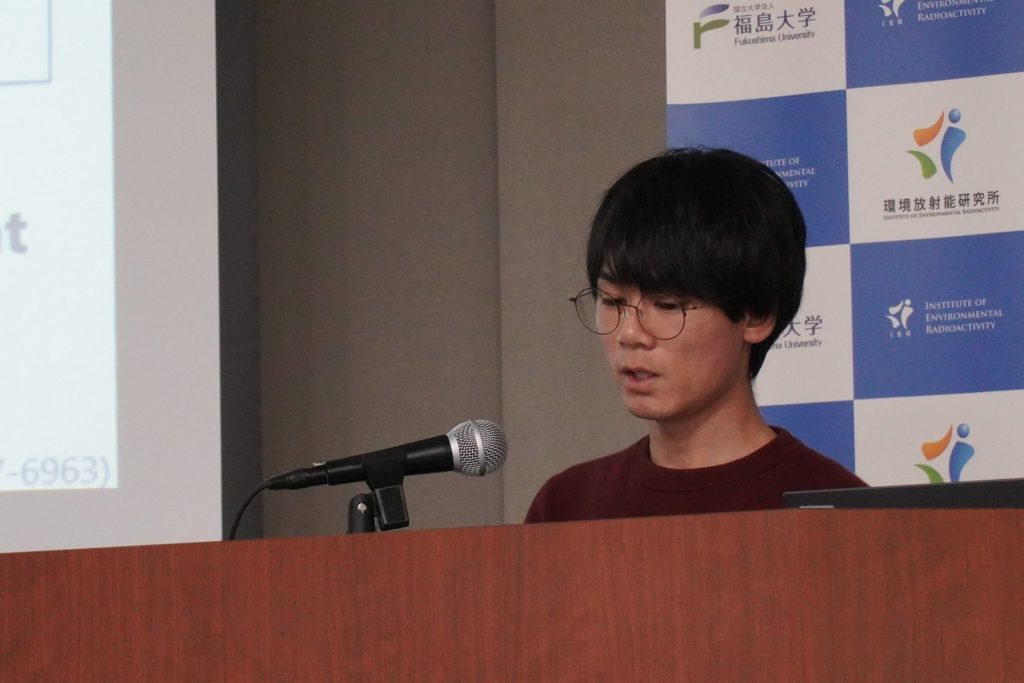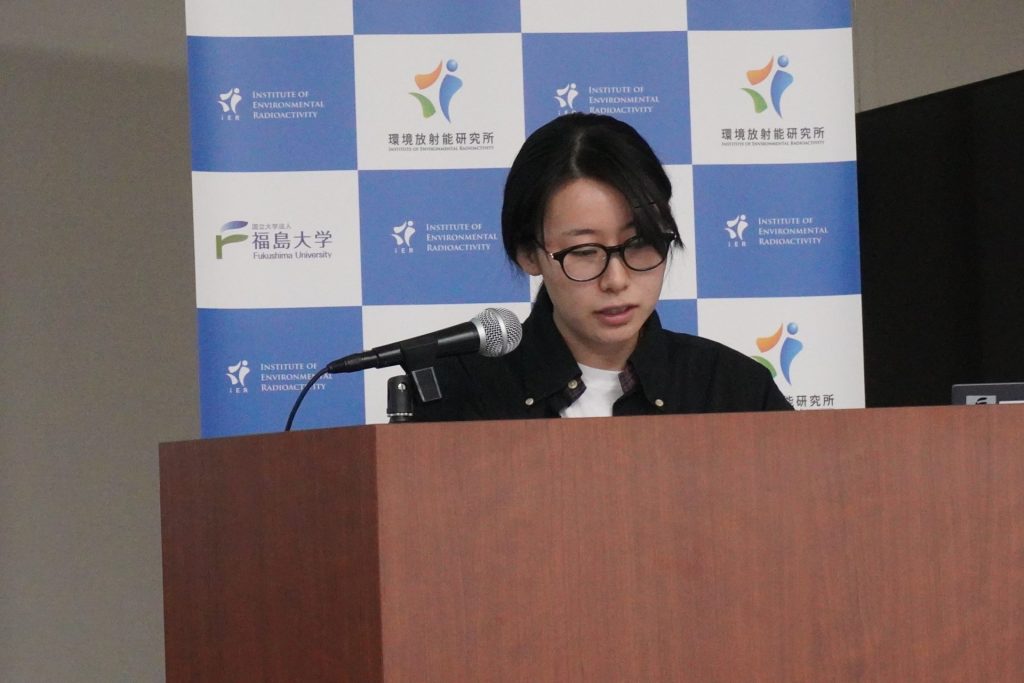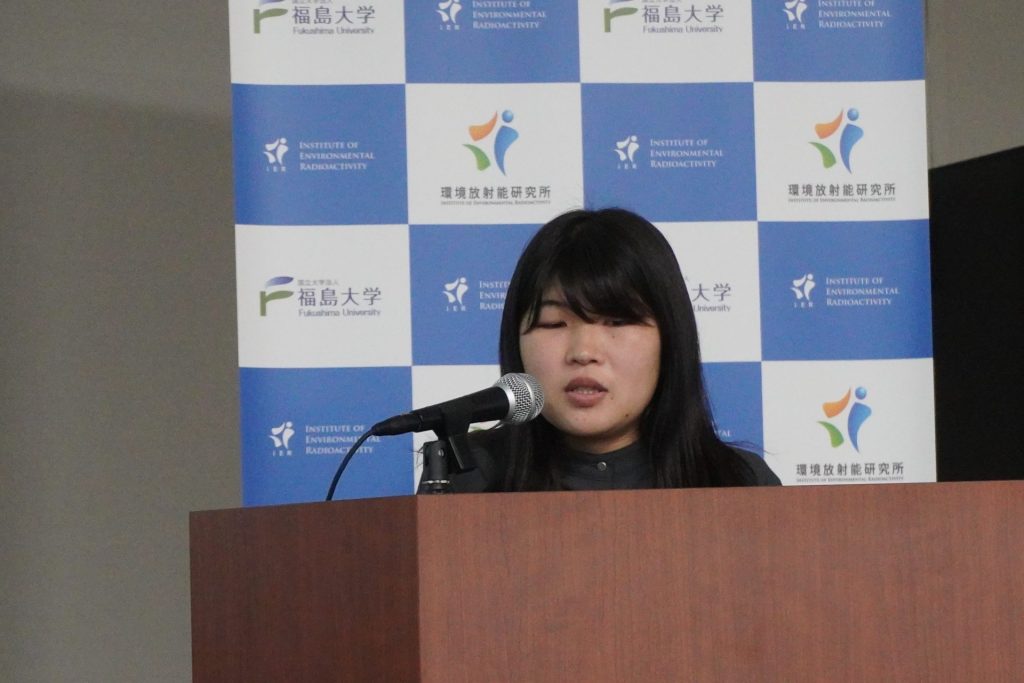October 23, 2023 4th IER seminar of FY2023 was held. <Graduate Students>
| Date & Time | Mon. October 23, 2023, 13:30-15:00 JST |
| Venue | 6F Conference room, Main Bldg. IER/Online (Zoom) |
| Speakers (In order of presentation) | SATO Shun (Second year master’s student, major in Environmental Radioactivity) MANOME Yuuki (Second year master’s student, major in Environmental Radioactivity) KUROSAWA Honoka (Second year doctoral student, major in Environmental Radioactivity) |
| Titles | ・Estimation of Cs-137 fluxes into the Ocean : comparison of direct release and river discharge (Sato) ・Elucidation of radiocesium contamination mechanism of fish using euryhaline fish as a model (Manome) ・Reconstruction of time changes in 137Cs concentrations in waters of three ponds at Fukushima evacuation zone based on vertical depth distribution in bottom sediment (Kurosawa) |
Institute of Environmental Radioactivity (IER) regularly holds the IER seminar in which the faculty members report on their research results, with the aim of facilitating their research activities and promoting communication.
In the 4th IER seminar of this fiscal year that was held on October 23, 2023, two master’s students and one doctoral student majoring in Environmental Radioactivity made presentations in English on the progress of their respective research activities. The seminar was attended by 22 IER faculty members and students.
Mr. Sato in Takata Laboratory presented the results of, regarding the continuous inflow of 137Cs into the ocean in the 10 years following the nuclear accident, considering estimation methods for the direct inflow from the Fukushima Daiichi Nuclear Power Plant and the inflow via rivers, as well as comparing the two calculated inflows.
Ms. Manome in Wada Laboratory presented the results of a previously unknown study on 137Cs uptake and excretion in freshwater and seawater using the euryhaline fish, starry flounder, showing that 137Cs uptake is regulated according to the concentration of K and that the uptake from two different pathways (food and water) results in different outcomes.
Ms. Kurosawa in Wakiyama Laboratory presented the results of testing whether the time change in 137Cs concentration in pond water in the evacuation zone can be reconstructed based on 137Cs vertical depth distribution in bottom sediment.
During the question-and-answer sessions, various comments and questions were raised from their supervisors as well as researchers in different research fields. The presenters also received advice for their future research activities, which was a good learning opportunity for them.



